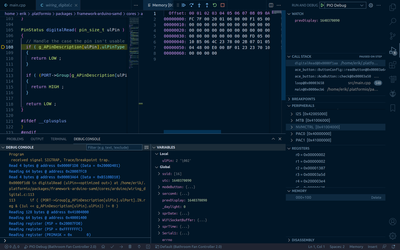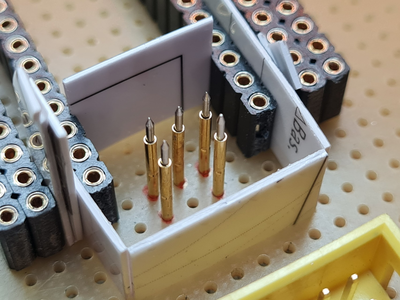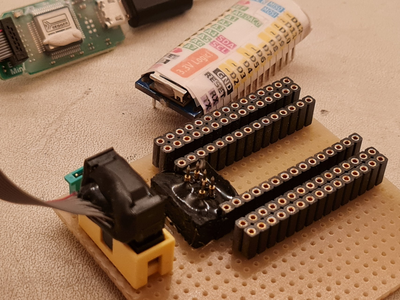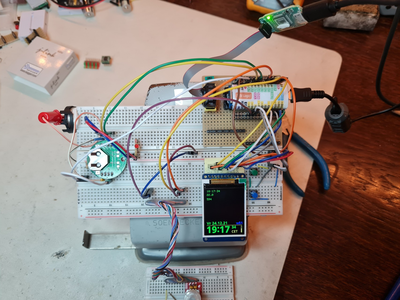@ronalex4203
I'd put an Arduino to actually decide when to drive the fan. It would sample the other detectors (temp, humidity, manual control, possibly IR sensor) and decide when and how much PWM to deliver to power the fan.
Anything seems possible when you don't know what you're talking about.
@will Let's not steal the OP's original thread. If/when I have time I will start a new thread on this.
First computer 1959. Retired from my own computer company 2004.
Hardware - Expert in 1401, and 360, fairly knowledge in PC plus numerous MPU's and MCU's
Major Languages - Machine language, 360 Macro Assembler, Intel Assembler, PL/I and PL1, Pascal, Basic, C plus numerous job control and scripting languages.
Sure you can learn to be a programmer, it will take the same amount of time for me to learn to be a Doctor.
@ronalex4203 Please don't shut up as you say! 😉 But for me RISC code optimization is way over my head. The hardware debugger is a very powerful tool of which I will use only a very small portion.
@wwjd777 I learned here on the forum a MOSFET might be even better than a relay. It could turn off the 12V fan motor power from the existing controller and another can turn on the motor controlled from humidity. If it was a relay, 1 set of N/O and 1 set of N/C is all that is needed. Picking the relay turns one off and one on. I might still go that way but I also might try a pair of MOSFET's that I think I have in inventory.
First computer 1959. Retired from my own computer company 2004.
Hardware - Expert in 1401, and 360, fairly knowledge in PC plus numerous MPU's and MCU's
Major Languages - Machine language, 360 Macro Assembler, Intel Assembler, PL/I and PL1, Pascal, Basic, C plus numerous job control and scripting languages.
Sure you can learn to be a programmer, it will take the same amount of time for me to learn to be a Doctor.
@will Agreed re accuracy. Until I get a look behind the cover where the manual controls are I have no idea if I can 'tap in' As I said it is normally controlled either manually with the IR remote (we NEVER use the on-fan manual controls) or by setting the 'thermostat'. My fear is all I will see when I open it up is an epoxy encapsulated IR receiver/controller board. I can probably decode the DC power leads to the motor and I am fairly sure if I apply a PWM signal to those wires with appropriate back voltage (diode) protection it will work. My concern is what happens if the humidity controller is driving the motor and then the temperature controller wants to drive the motor, or even if somebody manually tries to control it. Do multiple PWM signals 'add' thus possibly leading to an over power situation? My immediate thought is yes, so maybe a circuit that allows the humidity ON signal to block all the other signals (actually just block the DC power) does that make sense?
I would love to follow your project... I myself would even just wire the control panel (or IR remote) buttons to a relay and control the fan that way without major work on the original circuitry. But @will or others may have better and more professional suggestions. LOL
@wwjd777 Since to get at the guts I have to open the roof that won't happen until the warm weather, BUT if I do it my way I think I can do it without removing much if anything.
First computer 1959. Retired from my own computer company 2004.
Hardware - Expert in 1401, and 360, fairly knowledge in PC plus numerous MPU's and MCU's
Major Languages - Machine language, 360 Macro Assembler, Intel Assembler, PL/I and PL1, Pascal, Basic, C plus numerous job control and scripting languages.
Sure you can learn to be a programmer, it will take the same amount of time for me to learn to be a Doctor.
@wwjd777 I learned here on the forum a MOSFET might be even better than a relay. It could turn off the 12V fan motor power from the existing controller and another can turn on the motor controlled from humidity. If it was a relay, 1 set of N/O and 1 set of N/C is all that is needed. Picking the relay turns one off and one on. I might still go that way but I also might try a pair of MOSFET's that I think I have in inventory.
Would be great to try! I love solid state control when possible.
I would love to follow your project... I myself would even just wire the control panel (or IR remote) buttons to a relay and control the fan that way without major work on the original circuitry. But @will or others may have better and more professional suggestions. LOL
Take a look at Bill's most excellent adventure with MOSFET basics in ...
He also has other existing videos with more complete implementations as examples.
Anything seems possible when you don't know what you're talking about.
It works!
Never expected it to run without any trouble...
I just installed it so I have to play with it more... But upload with lightning speed alone is worth the 20 euro's...
I made a sort of breakout board to connect to the Arduino Nano 33 IoT Debug interface pins...
Software installation:
2. In PlatformIO I had to insert 1 line of code, that's it!
(for uploading another line, which I did...)
to be continued... 🙂




